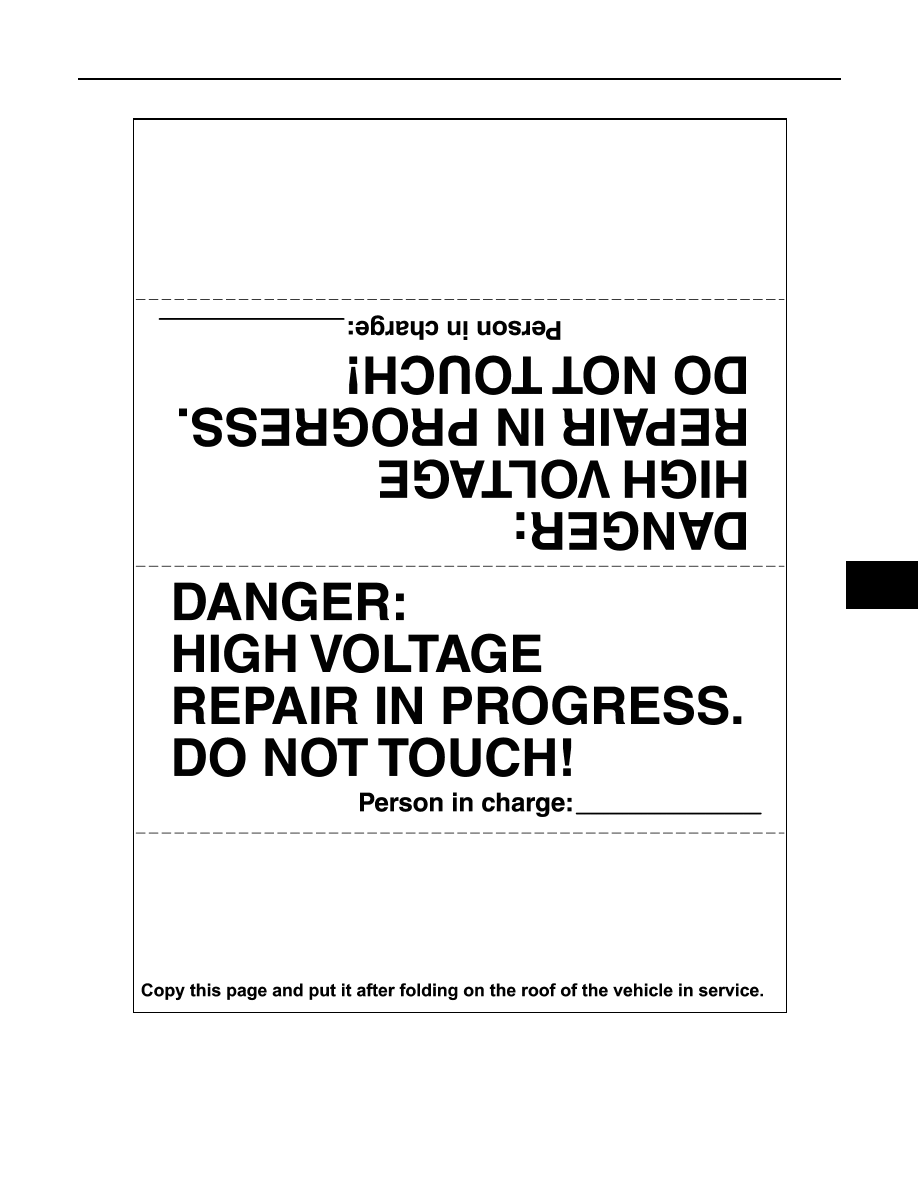Nissan Leaf. Manual - part 752

PRECAUTIONS
HAC-11
< PRECAUTION >
[AUTO A/C (WITH HEAT PUMP)]
C
D
E
F
G
H
J
K
L
M
A
B
HAC
N
O
P
Indicate "HIGH VOLTAGE. DO NOT TOUCH" on the vehicle under repair/inspection to call attention to other
workers.
Precaution for Removing 12V Battery
INFOID:0000000010121723
1. Check that EVSE is not connected.
NOTE:
If EVSE is connected, the air conditioning system may be automatically activated by the timer A/C func-
tion.
2. Turn the power switch OFF
→ ON → OFF. Get out of the vehicle. Close all doors (including back door).
JSAIA1600GB